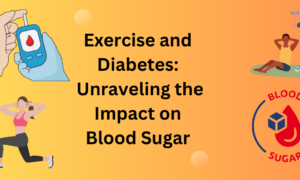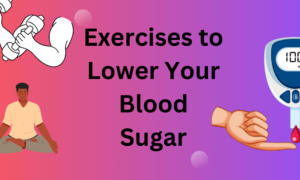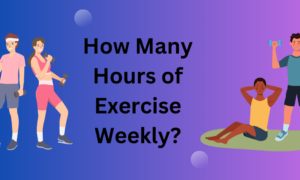For many people, the idea of improving cardiovascular health often conjures images of intense running, high-intensity interval training, or demanding gym sessions. While these activities can be effective, they are not always suitable for everyone; especially individuals dealing with joint issues, recovering from injuries, or simply preferring a gentler approach to fitness. This is where low-impact training comes into play. These activities offer the benefits of boosting heart health while minimizing stress on the body, making them accessible to people of various ages, fitness levels, and physical conditions.
Heart-healthy workouts do not have to be exhausting to be effective. In fact, overexertion can sometimes do more harm than good, especially for those who are new to exercise or have underlying health concerns. By focusing on joint-safe cardio routines, individuals can build endurance, improve circulation, and strengthen the heart without risking injury or burnout. This approach not only supports long-term fitness but also encourages consistency; a crucial factor in maintaining cardiovascular health.
Understanding Low-Impact Training
Low impact training is a type of exercise that reduces stress on joints, ligaments and connective tissue by avoiding high impact, jarring movements. Unlike running, jumping or plyometric exercises, low impact aerobic workouts keep at least one foot on the ground at all times or use smooth controlled movements that don’t put strain on the body. This makes them perfect for older adults, people with arthritis, those recovering from injuries, beginners starting their fitness journey or anyone with chronic joint pain.
The beauty of low impact training is that despite being gentle it still raises the heart rate enough to meet cardiovascular health standards. Popular activities include brisk walking, swimming, cycling, rowing, water aerobics, yoga, Pilates and using an elliptical machine. These exercises not only improve heart and lung health but also muscle tone, flexibility and overall endurance. Because the movements are smooth and controlled participants often experience minimal post workout soreness, faster recovery times and lower risk of overuse injuries.
The principle is simple yet powerful: when exercise feels safe, enjoyable and manageable it’s more likely to become a habit. Habit is key to long term fitness as it allows us to progress without setbacks. That’s why low impact workouts are becoming the go to for those seeking sustainable cardiovascular health, mobility and lifelong physical activity without compromising joint safety.
Cardiovascular Benefits Without Overexertion
The heart is like any other muscle in the body, it gets stronger and more efficient when exercised regularly. But you don’t need to go extreme to get that strengthening effect. Moderate intensity heart healthy workouts can be just as good as high intensity workouts in improving circulation, lowering resting heart rate and delivering oxygen to the tissues. In fact for many people, consistency is more important than intensity.
Low impact aerobic exercise is great for building cardiovascular endurance because it engages large muscle groups in smooth, rhythmic and sustained movements. Activities like walking, swimming, cycling or using an elliptical gets the heart to pump more efficiently, which over time can lower blood pressure, improve cholesterol profiles and overall heart function. Since these workouts put minimal strain on the joints and connective tissues, the risk of injury is reduced and you can train more frequently without extended recovery periods; a big factor in maintaining long term cardiovascular benefits.
Another advantage is that by not overexerting yourself, low impact exercise reduces the chance of fatigue, dizziness or strain on the cardiovascular system; things that can discourage you from continuing a fitness program. For people with medical conditions like hypertension, early stage heart disease or joint problems, low impact cardio is a safe and sustainable way to improve stamina and heart health without unnecessary risks. By combining safety with effectiveness, these workouts are the perfect balance, encouraging regular participation and lifelong cardiovascular wellness.
Why Low-Impact Matters for Joint Health
One of the main challenges with high-intensity exercise is the toll it can take on the joints, especially over time. Repetitive pounding on hard surfaces, abrupt changes in direction, and forceful impacts can lead to wear and tear on cartilage, ligaments, and tendons. This is particularly concerning for people with osteoarthritis, past injuries, or a genetic predisposition to joint issues.
Joint-safe cardio minimizes these risks by eliminating or reducing high-impact movements. Swimming, for example, supports the body’s weight in water, drastically reducing the load on joints while still allowing for a full-body workout. Cycling offers smooth, circular motion that strengthens leg muscles without jarring the knees or hips. Even walking, when done at a brisk pace, delivers many of the same cardiovascular benefits as running, with far less stress on the body.
By preserving joint health through low-impact aerobic exercise, individuals can continue exercising well into later life without being sidelined by chronic pain or injury. This not only benefits the joints themselves but also supports long-term cardiovascular wellness, as it allows for sustained engagement in heart-healthy workouts over decades.
Examples of Effective Low-Impact Workouts
When people think of low-impact aerobic exercise, they sometimes assume it means low-intensity, but that is not necessarily true. There are plenty of workouts that get the heart rate up without excessive strain on the joints. Brisk walking, for instance, can be modified with inclines or varied terrain to challenge cardiovascular endurance. Swimming and water aerobics are excellent for full-body conditioning, offering both resistance and cardiovascular benefits.
Cycling, whether outdoors or on a stationary bike, remains a popular choice for joint-safe cardio because it allows for long-duration sessions without significant joint stress. Elliptical training is another effective option, combining the benefits of running with a gliding motion that eliminates harsh impact. For variety, low-impact dance classes, Pilates, and rowing can also be included as part of a heart-healthy workout plan.
What matters most is maintaining proper form and a moderate level of exertion; enough to raise the heart rate but not so much that it leads to overexertion. This balance ensures cardiovascular gains without the risks often associated with high-impact activities.

Combining Strength Training with Low-Impact Cardio
While low impact aerobic exercise is the foundation of joint friendly cardio, adding strength training takes it to the next level. Building muscle supports joint stability, posture and metabolism all of which contribute to better endurance and heart function.
For heart healthy workouts, adding light resistance exercises such as bodyweight squats, resistance band exercises or water based strength exercises can be very beneficial. These exercises strengthen the muscles around the joints, reducing strain during joint safe cardio and improving overall movement efficiency.
Strength training also supports bone health which is important for older adults and anyone at risk of osteoporosis. When combined with regular low impact cardio it’s a balanced fitness plan that addresses both cardiovascular health and musculoskeletal resilience so you can stay active and independent for longer.
Maintaining Motivation with Low-Impact Training
One of the most overlooked aspects of any exercise plan is adherence. No matter how scientifically sound a workout routine may be, it will not deliver results if people do not stick with it. Low-impact training has a significant advantage in this area because it tends to be more enjoyable and less intimidating for beginners.
Many heart-healthy workouts in this category can be done outdoors, such as walking, hiking on easy trails, or cycling through scenic areas. These activities not only benefit the heart but also provide mental health boosts through fresh air and exposure to nature. Indoor options like group fitness classes, water aerobics, and elliptical sessions offer social interaction, which can further enhance commitment.
Because low-impact aerobic exercise is easier to recover from, people are more likely to exercise multiple times per week without burnout. The reduced risk of injury also means fewer interruptions to progress, keeping motivation levels high. Over time, this consistency is what delivers lasting cardiovascular benefits.
Low-Impact Training for Different Age Groups
The adaptability of joint-safe cardio makes it suitable for a wide range of ages. For younger adults, it can be a recovery tool between more intense workouts or a gentle re-entry into fitness after injury. For middle-aged individuals, it offers a sustainable way to maintain cardiovascular health while minimizing strain on joints that may be starting to show signs of wear.
Older adults, in particular, benefit from low-impact aerobic exercise because it helps maintain mobility, balance, and endurance without putting them at risk for falls or joint pain. Gentle swimming sessions, stationary cycling, and slow-paced walking are all effective heart-healthy workouts for this demographic, supporting not just heart health but also overall quality of life.
The key is to tailor the intensity and duration of sessions to individual fitness levels and any medical considerations, ensuring that the exercise remains both safe and effective for long-term cardiovascular support.

Tracking Progress in Low-Impact Cardiovascular Training
One of the best ways to stay motivated with low-impact aerobic exercise is to track progress over time. While it may seem like low-impact workouts produce slower results compared to high-intensity training, measurable improvements in endurance, heart rate, and overall fitness can still be achieved and monitored. Using tools such as fitness watches, mobile apps, or even simple workout journals allows individuals to record session duration, distance covered, and perceived exertion levels.
Tracking resting heart rate over time is particularly useful for evaluating cardiovascular benefits. As heart-healthy workouts become a regular habit, resting heart rate often decreases, signaling improved efficiency in heart function. Monitoring recovery time; how quickly the heart rate returns to normal after exercise; is another effective measure of progress.
Progress can also be seen in functional improvements, such as being able to walk longer distances, swim more laps, or cycle at a faster pace without discomfort. By documenting these milestones, exercisers can see tangible proof of how joint-safe cardio is enhancing their health, which helps maintain consistency and enthusiasm for the program.
Nutrition’s Role in Supporting Heart Health with Low-Impact Exercise
While low-impact aerobic exercise plays a major role in cardiovascular fitness, nutrition is equally important in supporting heart function and maximizing workout benefits. A diet rich in whole grains, lean proteins, healthy fats, and plenty of fruits and vegetables provides the essential nutrients the heart needs to function efficiently. Staying hydrated before, during, and after heart-healthy workouts also helps maintain optimal circulation and prevent fatigue.
Nutrients like omega-3 fatty acids, potassium, and antioxidants are particularly beneficial for heart health, as they help reduce inflammation, regulate blood pressure, and protect blood vessels. For individuals engaging in regular joint-safe cardio, maintaining balanced energy intake is crucial; especially if sessions are longer in duration. Skipping meals or not consuming enough calories can lead to fatigue, making it harder to sustain a consistent exercise routine.
Timing meals can also impact performance. Eating a light, balanced snack 30–60 minutes before exercise can provide energy without causing discomfort, while post-workout meals should focus on replenishing glycogen stores and supporting muscle recovery. By pairing proper nutrition with a consistent low-impact training program, individuals can amplify cardiovascular benefits and improve overall well-being.
Conclusion
Low-impact training is one of the most accessible and sustainable ways to maintain and improve heart health. By focusing on low-impact aerobic exercise, individuals can enjoy the benefits of heart-healthy workouts while protecting their joints and avoiding the risks of overexertion. Whether through walking, swimming, cycling, or elliptical training, joint-safe cardio provides a safe, enjoyable, and effective route to better cardiovascular function. The real power of this approach lies in its sustainability. By minimizing strain and maximizing comfort, low-impact training encourages consistency, which is the most important factor in long-term health improvement. For people of all ages and fitness levels, this method offers a clear path to stronger hearts, healthier joints, and an active, fulfilling life.





















